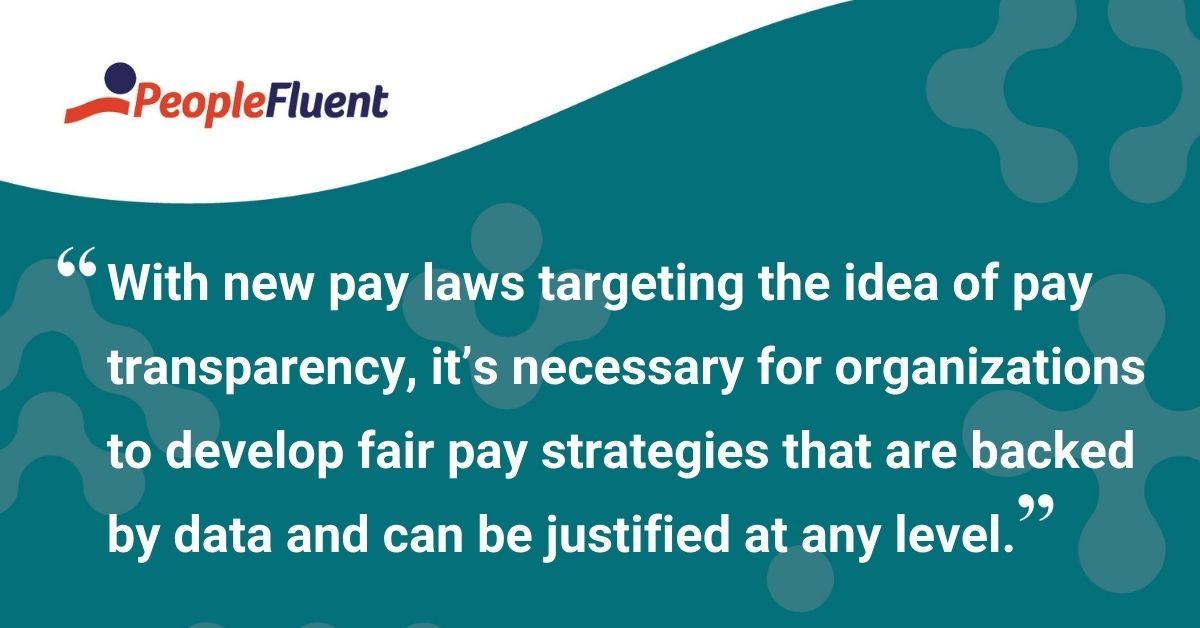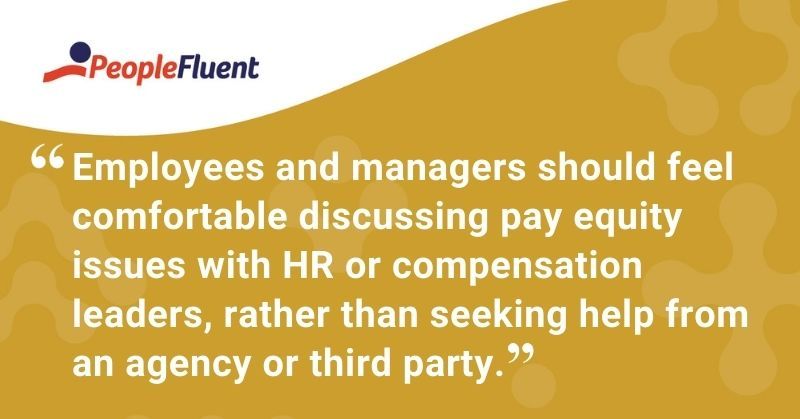Published: Oct 30, 2020Time to read: 5mins Category: Compensation
Workplaces That Work: How to Create a Culture That Embraces Pay Equity
When employees feel they’re being rewarded fairly, they’re more engaged and motivated—which, in turn, boosts retention and productivity. A transparent pay equity strategy sends a powerful message that attracts the diverse talent that drives great business success. Read on to find out how to use a combination of fair pay strategies and the right compensation planning tools to achieve a culture that embraces pay equity.
Pay equity is one of several contributing factors to a company's overall reputation for fairness. It’s a bottom-line result that can bolster or undermine all other efforts to create both a sense of fairness in the workplace and a reputation for fairness in the world.
In fact, ADP’s 2019 Workforce View in Europe Report found that 75% of Millennials would consider leaving their employer if they discovered men and women were receiving unequal pay. Not only does unfair pay decrease worker and public trust in your organization, it can lead to high employee turnover, low productivity, and other negative impacts on the business.
How Fair Pay Strategies Can Improve Business Outcomes
No matter how exceptional your company’s initiatives are, it can be all for naught if unfair pay practices exist. One study found that even the perception of gender pay gaps resulted in job dissatisfaction, which proved to have a negative impact on the employee. This includes:
- turnover intent
- lowered employee discretionary effort
- decreased productivity and performance
- poor engagement levels
- deviant employee behavior
- low employee motivation
While a majority of the negative impact is on the employee side, unfair pay practices also affect a company’s ability to attract new talent. Perhaps as important is that the revelation of large pay gaps or other discriminatory pay practices can be detrimental to the company’s reputation.
With new pay laws targeting the idea of pay transparency, both in the US and abroad, it’s necessary for organizations to develop fair pay strategies that are backed by data and can be justified at any level (e.g. compensation committees or government regulators).

You might also like: ‘3 Benefits of Setting up a Compensation Team’
Designing a Culture That Embraces Pay Equity
1. Conduct Pay Analysis
When conducting a pay analysis, start by gathering pay, employee, and performance data. Look at criteria beyond base pay, such as bonuses, equity, and total compensation. Perform comparator analysis or multiple regression analysis to see which factors correlate or don’t correlate with compensation. Finally, complete external market studies to ensure your organization is offering both a competitive and fair wage for the respective roles.
2. Reinforce Process, Iterate, and Improve
Your organization knows which pay variables they value most. So, be sure to document them and collect data in order to create a process for managing data effectively. Most importantly, there needs to be a culture where employees and managers feel comfortable discussing pay equity issues rather than seeking help from an agency or third party. Don’t be afraid to solicit feedback from HR colleagues and compensation decision-makers in the business.
Read more from our partner, Affirmity: ‘The Undeniable Value of Inclusive Leadership and Visible Equity’
3. Avoid Common Mistakes
Steer clear of these four behaviors:
- Organizations can suffer from overspending unless there’s oversight when managers are aggregating discretionary spend.
- Establishing a quick fix to pay gaps, without creating a long-term strategy to revisit and improve processes.
- Waiting until talent processes are complete to review pay equity, as this leaves no room for improvement along the way.
- Not reviewing or auditing processes on a continuous basis.

Keep reading: ‘The Real Cost of Pay Inequality: More Than Just $160 Trillion’
4. Educating Decision Makers
Communicate and train decision makers to understand your pay equity strategy so they can act as internal advocates against pay gaps. Train decision makers to spot common unconscious biases that occur during the performance review beyond gender or race biases (e.g. recency bias, central tendency or lack of differentiation bias, and halo effect). Ensure managers are confident and prepared to have meaningful compensation discussions with employees.
5. Communicating Pay Decisions to Employees
Creating a culture of pay transparency means every person in your organization should have an understanding of your pay strategies. Start by providing employees with a clear description of your equal pay philosophy. Issue compensation statements that outline different components of compensation and relevant metrics that are informing your company’s compensation decisions. Encourage employees to discuss compensation questions with their managers and/or their HR representative.
More from the blog: ‘3 Ways to Innovate and Improve Your Compensation Design Process’
For more information on achieving pay transparency, listen to a recording of the recent webinar ‘Prioritizing Pay Equity for Competitive Advantage: Making the Business Case for Fair Pay’, co-presented by our sister company, diversity, equity, and inclusion experts, Affirmity.
Discover How to Reward People and Stay Competitive
PeopleFluent software provides the tools to help you plan and execute complex compensation plans, so you keep within your budget while attracting, rewarding, and retaining top performers.